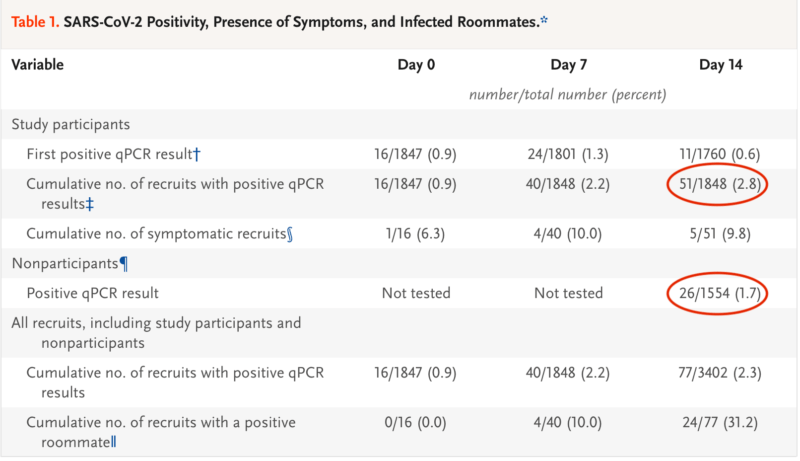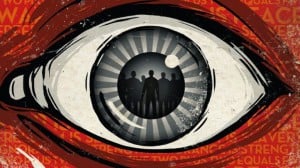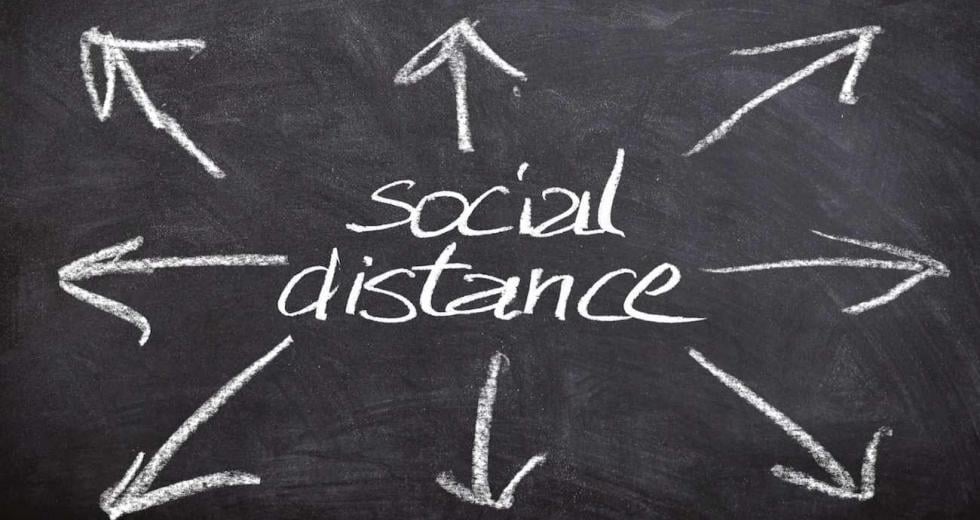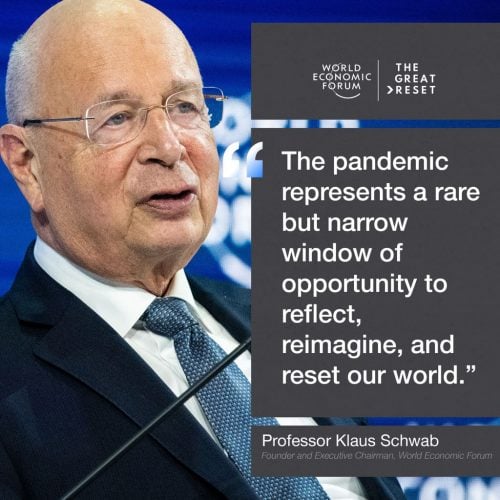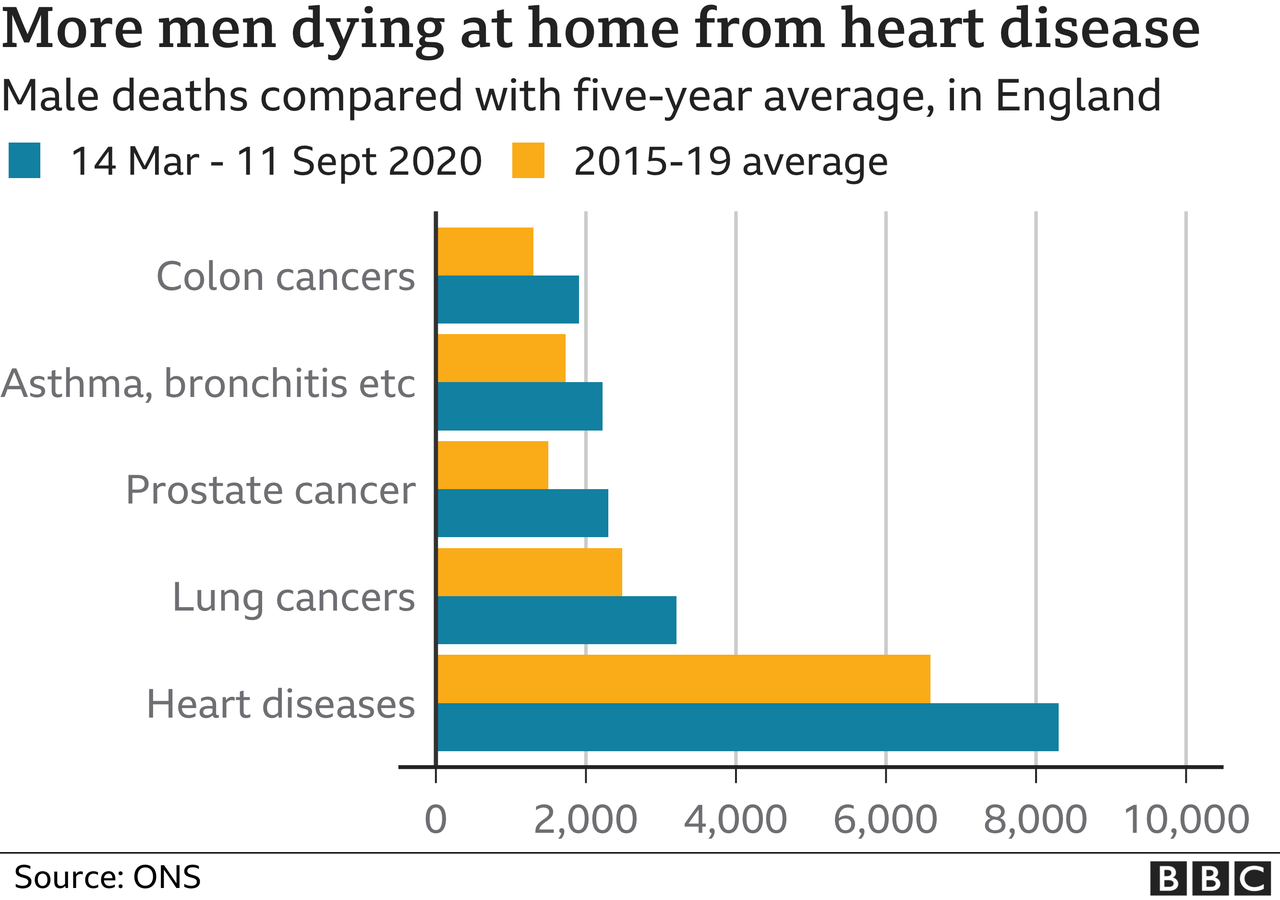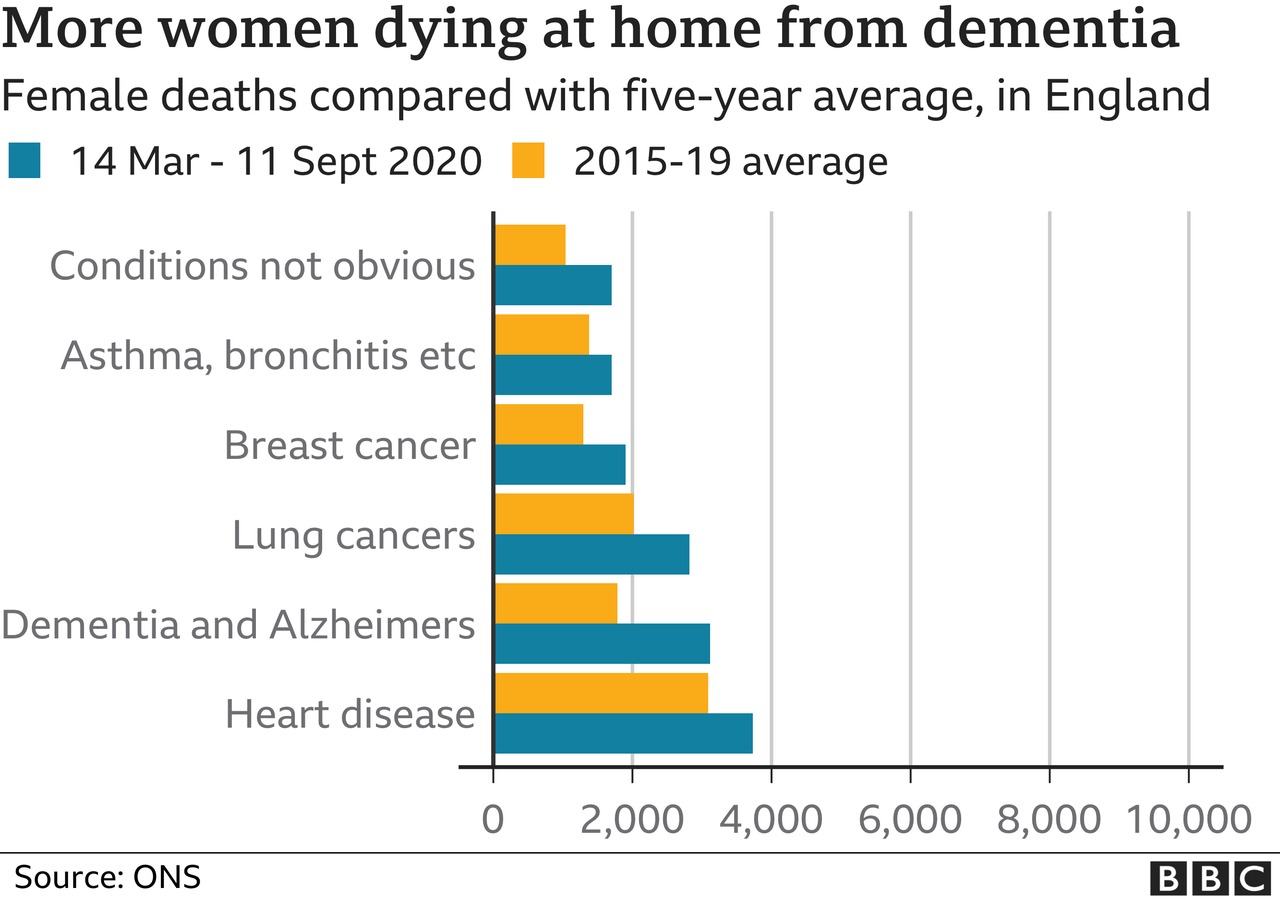Introduction
A dangerous, life-threatening sequence of events has unfolded since The Lancet’s fraudulent[i] hydroxychlorquine (HCQ) article appeared May 22, followed by headlines demonizing this ancient anti-malarial drug – aka quinine, aka chloroquine, and known to antiquity as the “sacred bark”.[ii]
The false news that 96,032 hospitalized patients on six continents were at risk for lethal heart rhythms sent shock waves throughout the world. Immediately, many randomized control trials (RCT’s) at the World Health Organization and elsewhere were suspended until the Lancet article was finally retracted two weeks later, June 5.
But the damage was done. The WHO had ordered countries to stop using it, and European Union countries had banned its use (outside clinical trials) for Covid-19 treatment. Clinical trials themselves, such as the NAID trial announced by the US National Institutes of Health on May 14,[iii] were cancelled. A hostile press frightened people from re-entering clinical trials that might have cleared it for use.
Worst of all, newly symptomatic people who had formerly benefitted from early outpatient treatment were now progressing to Phase 2 of the disease, during which the dangerous immune system “cytokine” storm[iv] often leads to hospitalization and death.
On May 27, less than a week into this disaster, a top world epidemiology journal, the American Journal of Epidemiology, issued an urgent call from award-winning Yale Professor, Harvey Risch: “Early Outpatient Treatment of Symptomatic, High-Risk Covid-19 Patients that Should be Ramped-Up Immediately as Key to the Pandemic Crisis.”
The abstract reads:
“Hydroxychloroquine+azithromycin has been widely misrepresented in both clinical reports and public media, and outpatient trials results are not expected until September. Early outpatient illness is very different than later hospitalized florid disease and the treatments differ. Evidence about use of hydroxychloroquine alone, or of hydroxychloroquine+azithromycin in inpatients, is irrelevant concerning efficacy of the pair in early high-risk outpatient disease. Five studies, including two controlled clinical trials, have demonstrated significant major outpatient treatment efficacy…These medications need to be widely available and promoted immediately for physicians to prescribe.”(author’s bolding)[v]
A Google News search reveals the astonishing truth that the corporate media, with the exception of Fox News,[vi] did not report this article.
Is the media interested in a cure for Covid-19? Or is it in lockstep with Big Pharma, which seems to have little interest in an existing treatment for the disease?
As one analyst reported,
“The possibility of a cheap and easy treatment for Covid from re-purposed generic drugs, especially hydroxychloroquine, is a mortal threat to these financial interests.[vii] As France Soir put it: the trial management must ‘never put low-cost hydroxychloroquine therapy in direct competition with remdesivir’. Or with mass vaccination.”[viii]
What better strategy than for these financial interests to manufacture a hydroxychloroquine controversy?
A June 17 article titled “Behind the French controversy over the medical treatment of Covid-19: The role of the drug industry,” reveals just how such a tactic has been brought to bear on the issue.[ix]
When did the hydroxychloroquine “controversy” first appear?
Santa Monica cariologist Dr. Dan Wohlgelernter reported on June 18 that “there was never controversy about hydroxychloroquine right up until March 20, 2020.”[x]
He was referring to Donald Trump’s tweet of March 21:
“HYDROXYCHLOROQUINE & AZITHROMYCIN, taken together, have a real chance to be one of the biggest game changers in the history of medicine. The FDA has moved mountains – Thank You! Hopefully they will BOTH (H works better with A, International Journal of Antimicrobial Agents)…..”[xi]
Dr. Wohlgelernter continues:
“We had data from China and from France well before that in February showing a significant beneficial impact of hydroxychloroquine – yet you saw physicians, politicians, journalists, saying that hydroxychloroquine is all hype and it’s all due to the president pushing it. That’s revisionist history.
The fact is there was a great deal of excitement in the medical community internationally a month before President Trump ever mentioned it, because of the data reported from China and from Dr. Raoult in France and it said that people used whatever political animosity they had towards the President to attack the medication that in fact had helped many people with coronavirus and could have helped many more had it and its reputation not been so sullied by political accusations and by poorly designed studies and by medical journals allowing publications that were negative as far as their conclusions – publications that never should have reached print because they hadn’t been adequately vetted.[xii]
What has been the role of Dr. Raoult in France?
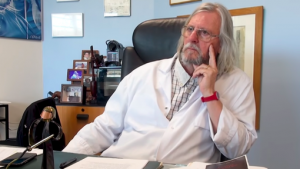
Dr. Didier Raoult (image on the right) was born in Senegal in 1952. His parents, a nurse and a French military doctor, moved the family to Marseille in 1961, where Raoult later became a physician and microbiologist, holding both M.D. and PhD degrees. He is married to psychiatrist and novelist Natacha Caïn, and they have three children together.
Raoult is the director ofthe Infectious and Tropical Emergent Diseases Research Unit (URMITE) in Marseille (Institut Hospitalo-Universitaire (IHU) Méditerranée Infection), with 200 staff. He also teaches infectious diseases in the Faculty of Medicine of Aix-Marseille University.
He has received numerous honours and awards, including Officer of the Legion d’honneur, Price Excellence in Clinical Medicine, Netherlands; J.D. Williams Award, United Kingdom; and Award of Excellence from the European Society for Clinical Microbiology and Infectious Diseases.[xiii]
With more than 2,300 indexed publications to his name, he is the most cited microbiologist in France, and is cited seventh in the world. He has 625,000 followers on Twitter.
Raoult is also active in Africa, returning every year to laboratories he set up in Dakar, and conducting tropical disease research all over Senegal.[xiv]
On June 25, Professor Raoult and his COVID-19 Task Force published their much-anticipated research on 3,737 COVID-19 patients, in the journal Travel Medicine and Infectious Disease.[xv]
(The team, knowing their treatment was effective, had decided not to conduct randomized controlled studies, which would have meant denying treatment to large numbers of placebo patients, letting their disease evolve untreated, and sending many to their deaths. The team’s approach reflects the “Ethical Principles for Medical Research” from the Declaration of Helsinki.[xvi])
The long-awaited article reported an overall 1.1% case fatality rate for the patients included in its study. More specifically:
“Our approach of early diagnosis and care of as many patients as possible results in much lower mortality rates than other strategies. The test-and-treat strategy adopted in Marseille also seems capable of shortening the duration of the outbreak when compared to data from France overall by identifying infected people and reducing their viral shedding duration. In fact, more people were tested in Marseille than in most other areas, and the outbreak lasted only 9 weeks…
Conclusion:
“Results suggest that early diagnosis, early isolation and early treatment of COVID-19 patients, with at least 3 days of HCQ-AZ lead to a significantly better clinical outcome and a faster viral load reduction than other treatments.”
On the day of Raoult’s publication, the Dr. Been Medical Lectures on YouTube, with 176,000 subscribers, explained the study in graphics, but could not find media coverage.[xvii]
On the days following its publication, Google News showed no English-speaking media coverage appearing under Raoult’s name, or under the first words of the title, “Outcomes of 3,737 COVID-19 patients”.
On June 24, the day before the article’s publication, Raoult had testified at the French National Assembly, saying that the article had been refused by The Lancet the very same week that the journal accepted the fraudulent and now retracted anti-HCQ article by Mehra et al.[xviii]
The hydroxychloroquine “controversy” thus shows clear signs of having been manufactured and orchestrated by the immensely wealthy drug industry through its power over the “captured media,”[xix] government agencies,[xx] and reluctant journal editors.[xxi]
How the media’s “randomized control” strategy is fueling the controversy
The day before the Lancet’s hydroxychloroquine embarrassment[xxii] was published May 22, the New York Times had updated its feature May 12 hit piece on Dr. Raoult Didier – having sent a reporter to France to round up Raoult’s critics and to report, in an epic 7,500 words, on “the man behind Trump’s favorite unproven treatments.”
The article dwelled at length on Raoult’s unorthodox methods and forthright personality, using an ad hominem approach rather than actual evidence against the microbiologist’s position.[xxiii]
The NYT provides a high-level example of the media trivializing hydroxychloroquine on the basis that it has not been proven in randomized control trials (RCTs) – which take months, if not years, to perform.
Meanwhile, the global pandemic is killing hundreds of thousands of people.
There is no vaccine for the common cold, which is caused by strains of the coronavirus and the rhinovirus. If a safe, effective Covid-19 vaccine can even be developed, at least a year will be needed to produce enough for worldwide use.
Four hundred years before randomized control trials existed, quinine, made from the “sacred bark” of the South American quina-quina tree, was used to treat malaria. Pharmacologically, it has been synthesized as chloroquine and hydroxychloroquine (HCQ). This cheap abundant drug has been on the WHO list of essential medicines since the list began in 1977.
Thousands of doctors are reporting that in the early phase of COVID-19, patients given a low dose of this drug in combination with azithromycin and zinc, get better.[xxiv]
However, this ancient gift to humankind was immediately outlawed for Covid-19 use in many countries following the fraudulent May 22nd Lancet study. Treatment is still denied to untold numbers of people, many of whom will have certainly died.
Additionally, HCQ’s bad press from the drug industry’s scare media has driven people away from enrolling in HCQ prophylaxis trials.
Instead, the media is giving good press to randomized control trials. It is true that in many settings RCT’s are considered to be the gold standard. But what is their value in the midst of a crisis such as Covid-19, when susceptible people require early prevention within days?
Hydroxychloroquine proponents do not claim that HCQ works on seriously ill Covid-19 patients in the hospital setting. Instead they understand the reality that HCQ+azithromycin succeeds only during Phase 1,[xxv] when people first show symptoms.
But others have been designing studies (including the disgraced Lancet and NEJM studies, and the abandoned NIH study) that examine HCQ in precisely the opposite context to its reported efficacy in Phase 1. And not in combination with zinc and azithromycin, but by itself.
This strategy is known as the “straw-man fallacy” – where you attribute a false position to your opponent, then easily knock it down.
These studies are systematically setting hydroxychloroquine up to fail. As stated by Dr. Wohlgelernter below, it is sabotage, pure and simple.
With the help of a colluding media, confusion now reigns supreme while the world awaits a profitable vaccine from the drug industry.
We will turn now to frontline doctors who have been protesting the suspension of this inexpensive, plentiful, generic drug that they have used successfully – while in some countries their patients are now dying without it.
Frontline doctors testify that HCQ works – and protest its sabotage
An April 2020 survey of 6200 doctors in 30 countries showed that globally, half of the doctors polled said they had used hydroxychloroquine for COVID-19.[xxvi]
On April 6, wider access to the drug was urged in a petition signed by nearly 500,000 French doctors and citizens.[xxvii]
On April 7, U.S. physician Jeffrey A. Singer wrote about prescribing HCQ in an independent (non-corporate-media) magazine:
“The FDA lets doctors prescribe off-label drugs all the time. Now that there’s a pandemic, some governors have decided doctors can’t make those decisions for themselves.
Doctors should not be prohibited from using their best clinical judgment and recommending it to patients—especially considering the fact that these drugs have been around for a long time, which means we are familiar with their risks and complications. The government should stay out of this and let clinicians practice medicine, provided they get their patients’ informed consent.”[xxviii]
On May 5, it was reported in France:
As France scrambles to prepare to lift its 2-month lockdown from 11 May, a group of doctors has published a new study they say proves the efficacy of the controversial malaria drug hydroxychloroquine, combined with the antibiotic azithromycin, in treating Covid-19.
The trial carried out on nearly 100 infected doctors and their families found that an HCQ and azithromycin combination at the first sign of symptoms, substantially reduced the viral load of Covid-19.[xxix]
On May 28, in consternation over the false Lancet article, an open letter from 200 scientists to the authors and The Lancet requested details of the data and an independent audit. The letter was “signed by clinicians, medical researchers, statisticians, and ethicists from across the world.”[xxx]
On June 1, Professor Harvey Risch, at the Yale Schools of Medicine and Public Health, was interviewed about HCQ:
The combination of hydroxychloroquine and azithromycin has been used for decades in hundreds of thousands of people with rheumatoid arthritis. There is a concern that these medications do change the heart pacing a little and could cause cardiac arrhythmias. However, these arrhythmias are still very rare in people using these medications.[xxxi]
Santa Monica cardiologist Dr. Dan Wohlgelernter said in a June 18 interview:
“I’ve prescribed it…recommended it to people…had conversations with physicians literally around the globe in Israel and Italy and England and the east coast of the United States, and I’ve read the literature extensively. Hydroxychloroquine definitely has a role; that role is specific. It’s an antiviral agent that is effective in early stages of infection; when used in that context it is effective and it is safe. Unfortunately, there have been studies that have looked at hydroxychloroquine in the wrong context; looked at it in severely critically ill people in the hospital setting. At that point the antiviral isn’t effective because you’ve gone beyond viral infection to an immune mediated widespread inflammatory reaction, so that was the wrong population to look at hydroxychloroquine.
That kind of study, that sabotage, is the whole story about hydroxychloroquine…it was obvious that hydroxychloroquine would fail in that context. Hydroxychloroquine has been reported to have heart toxicity and as a cardiologist I’m intimately aware of this literature and I’m familiar with hydroxychloroquine.
The study that was most specific in looking at the cardiac issues specifically with rhythm abnormalities was done in the East Coast in the New York area where they looked at 200 patients and carefully monitored their EKGs and looked for arrhythmias and they found no serious arrhythmias in any of those patients.
This is an FDA approved drug for 65 years; it’s generic, cheap, widely available. We give it to pregnant women, to breastfeeding women, to elderly patients, to patients who are immune-compromised…”[xxxii]
On a June 12 radio talk show in St. Louis, Missouri, Doctor Steve Crawford, Medical Director at Festus Manor, reported a 100% survival rate with early administration of hydroxychloroquine.[xxxiii]
On June 25 in India, where the media is not under western corporate control, the New Indian Express reported that Mandya district, which had a record number of Covid-19 cases, “has been recording an impressive turnaround despite continuing arrivals from hot spot states. Health officials claim that one of the reasons is because they are giving hydroxychloroquine (HCQ) to all those quarantined…They also quoted the government guidelines which permit prophylactic usage of HCQ (prevention).” Furthermore, “health workers and police personnel are given seven-week doses of HCQ as a preventive measure.”[xxxiv]
On June 19, the Economic Times in Jaipur, India reported:
“More than 4,300 healthcare workers including doctors and nurses have been given HCQ to help them prevent the infection as there are high chances of them getting infected while treating Covid patients.”[xxxv]
The right-wing medical group, the Association of American Physicians and Surgeons (AAPS) asked, in a June 17 press release:
“How can we trust the established authorities or prestigious journals when, in this perilous time, trials of an available, inexpensive, long-established drug appear to be designed to fail, while risking the lives of their subjects through deliberate or negligent drug overdoses?”[xxxvi]
The US media did not pick this up.
Nor did it pick up a second AAPS Press Release, June 22, which should have been more than newsworthy:
TUCSON, Ariz., June 22, 2020 /PRNewswire/ — Today the Association of American Physicians & Surgeons files its motion for a preliminary injunction to compel release to the public of hydroxychloroquine by the Food & Drug Administration (FDA) and the Department of Health & Human Services (HHS), in AAPS v. HHS, No. 1:20-cv-00493-RJJ-SJB (W.D. Mich.). Nearly 100 million doses of hydroxychloroquine (HCQ) were donated to these agencies, and yet they have not released virtually any of it to the public…
“Why does the government continue to withhold more than 60 million doses of HCQ from the public?” asks Jane Orient, M.D., the Executive Director of AAPS. “This potentially life-saving medication is wasting away in government warehouses while Americans are dying from COVID-19.”[xxxvii]
Conclusion
When a pandemic is raging across the entire planet, with people social distancing and national economies in turmoil, what is the most urgent approach to drug therapy?
To do nothing while randomized control trials await results months or years later?
Or to follow recommendations that have emerged from infectious disease specialists after treating thousands of cases using a consistent protocol?
The media shapes society’s common reality. This over-arching power carries a pervasive and commensurate responsibility.
The drastic failure to report honestly on HCQ goes far beyond incompetence: it is abetting the unspeakable forces who do not want people to be reliably cured during this pandemic until they can realize pandemic-level profits.
*
Note to readers: please click the share buttons above or below. Forward this article to your email lists. Crosspost on your blog site, internet forums. etc.
Notes
[i] Evidence of the origin of this fraudulence is given in: Elizabeth Woodworth, “Leaked: ‘Deadly’ HCQ: How the world’s top medical journals, The Lancet and NEJM, were cynically exploited by Big Pharma,” Global Research, 14 June 2020 (https://www.globalresearch.ca/leaked-deadly-hcq-world-top-medical-journals-lancet-nejm-exploited-big-pharma/5715859).
[ii] The anti-malarial natural substance quinine, taken from the bark of the South American quina-quina tree, is now sold as chloroquine and hydroxychloroquine. Jane Achan, et al., “Quinine, an old anti-malarial drug in a modern world: role in the treatment of malaria,” Malaria Journal, 24 May 2011 (https://www.ncbi.nlm.nih.gov/pmc/articles/PMC3121651/).
[iii] “NIH begins clinical trial of hydroxychloroquine and azithromycin to treat COVID-19,”NIH News Release, 14 May 2020 (https://www.nih.gov/news-events/news-releases/nih-begins-clinical-trial-hydroxychloroquine-azithromycin-treat-covid-19). This trial has not been re-instated.
[iv] Amber Dance, “What is a cytokine storm?” Knowledge Magazine, 10 April 2020 (https://www.knowablemagazine.org/article/health-disease/2020/what-cytokine-storm).
[v] Harvey A. Risch, “Early Outpatient Treatment of Symptomatic, High-Risk Covid-19 Patients that Should be Ramped-Up Immediately as Key to the Pandemic Crisis,” Amer. J. Epid, 27 May 2020 (https://academic.oup.com/aje/advance-article/doi/10.1093/aje/kwaa093/5847586). Risch is Professor at the Yale Schools of both Medicine and Public Health.
[vi] “Yale paper finds strong evidence for efficacy of use of hydroxychloroquine and azithromycin as COVID treatment,” Fox News, “The Ingraham Angle,” 29 May 2020 (https://video.foxnews.com/v/6160199007001#sp=show-clips).
[vii] The financial interests referred to were Gilead, Big Data, and Astra-Zeneca, which is “in merger talks with Gilead in a plan to create the world’s largest pharmaceutical company”.
[viii] Edmund Fordham, “RECOVERY: The plot sickens,” The Conservative Woman, June 19, 2020 (https://conservativewoman.co.uk/recovery-the-plot-sickens/).
[ix] Laurent Mucchielli, “Behind the French controversy over the medical treatment of Covid-19: The role of the drug industry,” Journal of Sociology, 17 June 2020 (https://journals.sagepub.com/doi/10.1177/1440783320936740).
[x] “SECOND OPINION: Doctors Discuss the Politicization of Hydroxychloroquine,” June 18, 2020, at 3:42 min. (https://www.youtube.com/watch?time_continue=7&v=m_JIz780i5w&feature=emb_logo).
[xi] Twitter: https://twitter.com/realDonaldTrump/status/1241367239900778501
[xii] SECOND OPINION, at 10:21 min. (https://www.youtube.com/watch?time_continue=7&v=m_JIz780i5w&feature=emb_logo).
[xiii] Elsevier, “Meet the Editor-in-Chief,” Human Microbiome Journal, 2020 (https://www.journals.elsevier.com/human-microbiome-journal/news/meet-editor-in-chie).
[xiv] Marième Soumaré, “Coronavirus: Didier Raoult the African and chloroquine, from Dakar to Brazzaville,” The Africa Report, 15 April 2020 (https://www.theafricareport.com/26264/coronavirus-didier-raoult-the-african-and-chloroquine-from-dakar-to-brazzaville/).
[xv] Jean-Christophe Lagier, et al, “Outcomes of 3,737 COVID-19 patients treated with hydroxychloroquine/azithromycin and other regimens in Marseille, France: A retrospective analysis,” Travel Medicine and Infectious Disease, 25 June 2020 (https://www.sciencedirect.com/science/article/pii/S1477893920302817). This investigation by the 19 members of the IHU COVID-19 Task force was conceptualized by Raoult. All authors read and approved the final manuscript.
[xvi] Declaration of Helsinki Ethical Principles for Medical Research Involving Human Subjects
HELSINKI WORLD MEDICAL ASSOCIATION STATEMENT – Section No. 32:
“32. In the treatment of a patient, where proven prophylactic, diagnostic and therapeutic methods do not exist or have been ineffective, the physician, with informed consent from the patient, must be free to use unproven or new prophylactic, diagnostic and therapeutic measures, if in the physician’s judgement it offers hope of saving life, reestablishing health or alleviating suffering. Where possible, these measures should be made the object of research, designed to evaluate their safety and efficacy. In all cases, new information should be recorded and, where appropriate, published. The other relevant guidelines of this Declaration should be followed.” (https://www.who.int/bulletin/archives/79(4)373.pdf?fbclid=IwAR0dyzXSt12H0fvt6xL7Zk-29FPprs7i0EDCPKWk5Ux1UiES17J2Nr0-YjY).
[xvii] “Hydroxychloroquine + Azithromycin Two Studies,” DrBeen Medical Lectures, 25 June 2020 (https://www.youtube.com/watch?v=vgQqT2xbXlo).
[xviii] The Lancet, “RETRACTED: Hydroxychloroquine or chloroquine with or without a macrolide for treatment of COVID-19: a multinational registry analysis, by Mandeep R. Mehra et al,” Lancet,5 June 2020 (https://www.thelancet.com/journals/lancet/article/PIIS0140-6736(20)31180-6/fulltext).
[xix] Anya Schiffrin, “Government and corporations hinder journalists with ‘media capture,’”Columbia Journalism Review, August 29, 2017 (https://www.cjr.org/watchdog/media-capture.php).
[xx] Laurent Mucchielli, “Behind the French controversy over the medical treatment of Covid-19: The role of the drug industry,” Journal of Sociology, 17 June 2020 (https://journals.sagepub.com/doi/10.1177/1440783320936740).
[xxi] Woodworth, “Leaked: ‘Deadly’ HCQ” (https://www.globalresearch.ca/leaked-deadly-hcq-world-top-medical-journals-lancet-nejm-exploited-big-pharma/5715859).
[xxii] Ibid.
[xxiii] Scott Sayare, “He was a Science Star. Then He Promoted a Questionable Cure for Covid-19,” New York Times, 12 May 2020, updated May 21, 2020 (https://www.nytimes.com/2020/05/12/magazine/didier-raoult-hydroxychloroquine.html).
[xxiv] “The esteemed Dr Cristiana Altino de Almeida, who is a specialist in nuclear medicine with over 50 years of experience, is part of a movement of thousands of Brazilian medical doctors who are now treating COVID-19 patients at the early stage of the disease, with hydroxychloroquine, azithromycin, zinc and other medications, mostly through telemedicine, the patients not being hospitalized.” In: “Interview with Dr Altino de Almeida, from Recife, Brazil,” Posted on June 28, 2020 (http://covexit.com/interview-with-dr-altino-de-almeida-from-recife-brazil/?fbclid=IwAR3Q-P3Uml5_5gTAIz33ZZX_RnWPgMsoQfs3Qh5BkHUmT0CVi4oEB4LrP8Y.)
[xxv] Dr. Raoult has explained in relation to the Oxford RECOVERY Trial, that “at the first viral stage, one must give medicines against the virus; in the second inflammatory phase, one needs to give medications against that reaction; and then in the third phase, it’s work to be done in intensive care units. Therefore, the same medication cannot be used for the three stages of the disease. He insists that it was a trial that was designed before one had an understanding of the disease, and that such randomized clinical trials should not be done before one has such an understanding.” Summarized from Didier Raoult, at: “The Marx Brothers are Doing Science: the Example of RECOVERY,” 9 June 2020 (http://covexit.com/professor-raoult-compares-the-oxford-recovery-trial-academics-to-the-marx-brothers/).
[xxvi] Katharina Buchholz, “Prescription Rate of Hydroxychloroquine Varies Widely,” Statista, 21 April 2020
(https://www.statista.com/chart/21411/share-of-doctors-using-hydroxychloroquine-for-covid-19/).
[xxvii] Lee Mclaughlan, “Covid-19 France: petition for wider chloroquine access,” 6 April 2020 (https://www.connexionfrance.com/French-news/Time-wasted-over-use-of-choroquine-coronavirus-drug-says-petition-by-former-French-health-minister).
[xxviii] Jeffrey A. Singer, “Doctors, Not Politicians, Ought To Decide Whether Off-Label Drug Use of Hydroxychloroquine Is Appropriate for COVID-19 Patients,” Reason Magazine, 7 April 2020 (https://reason.com/2020/04/07/doctors-not-politicians-ought-to-decide-whether-off-label-drug-use-of-hydroxychloroquine-is-appropriate-for-covid-19-patients/).
[xxix] Christina Okello, “French doctors renew bid to clear HCQ to treat Covid-19 ahead of lockdown exit,” RFI, 5 May 2020 (http://www.rfi.fr/en/france/20200505-french-doctors-renew-push-to-clear-malaria-drug-hydroxychloroquine-to-secure-covid-19-lockdown-exit).
[xxx] The full-text letter and signatories appear
at https://zenodo.org/record/3862789#.XuQiNmYTGhM
[xxxi] Harvey Risch, “Using Hydroxychloroquine and Other Drugs to Fight Pandemic,” Yale School of Public Health Newsletter, 01 June 2020 (https://publichealth.yale.edu/news-article/25085/).
[xxxii] “SECOND OPINION: Doctors Discuss the Politicization of Hydroxychloroquine,” June 18, 2020, 0:14 min. (https://www.youtube.com/watch?time_continue=7&v=m_JIz780i5w&feature=emb_logo).
[xxxiii] “Local physician has 100% survival rate with early administration of hydroxychloroquine,” 97.1 FM Talk, Marc Cox Morning Show, 12 June 2020 (https://971talk.radio.com/blogs/the-marc-cox-morning-show/dr-steve-crawford-of-festus-manor-on-hydroxychloroquine?fbclid=IwAR2MjR2RBoJeofbg01eLuuAc3d4X543zpW_G_cClxxikzii3mAq0A3vvUeM).
[xxxiv] M.S. Ajith, “Hydroxychloroquine helped Mandya fight virus: Officials,” New Indian Express, 25 June 2020 (https://www.newindianexpress.com/states/karnataka/2020/jun/25/hydroxychloroquine-helped-mandya-fight-virus-officials-2161022.html).
[xxxv] Economic Times HealthWorld (India Times), 19 June 2020 (https://health.economictimes.indiatimes.com/news/diagnostics/hcq-beneficial-as-preventive-drug-sms-doctors-told-icmr/76464620).
[xxxvi] Association of American Physicians and Surgeons, “Researchers Overdosing COVID-19 Patients on Hydroxychloroquine,” States Association of American Physicians & Surgeons (AAPS), Tucson, Arizona, 17 June 2020 (https://www.prnewswire.com/news-releases/researchers-overdosing-covid-19-patients-on-hydroxychloroquine-states-association-of-american-physicians–surgeons-aaps-301078986.html).
[xxxvii] Association of American Physicians and Surgeons, “Preliminary Injunction Sought to Release Hydroxychloroquine to the Public, in the Lawsuit by the Association of American Physicians & Surgeons (AAPS),” Tucson, Arizona, 22 June 2020 (https://www.prnewswire.com/news-releases/preliminary-injunction-sought-to-release-hydroxychloroquine-to-the-public-in-the-lawsuit-by-the-association-of-american-physicians–surgeons-aaps-301081160.html).

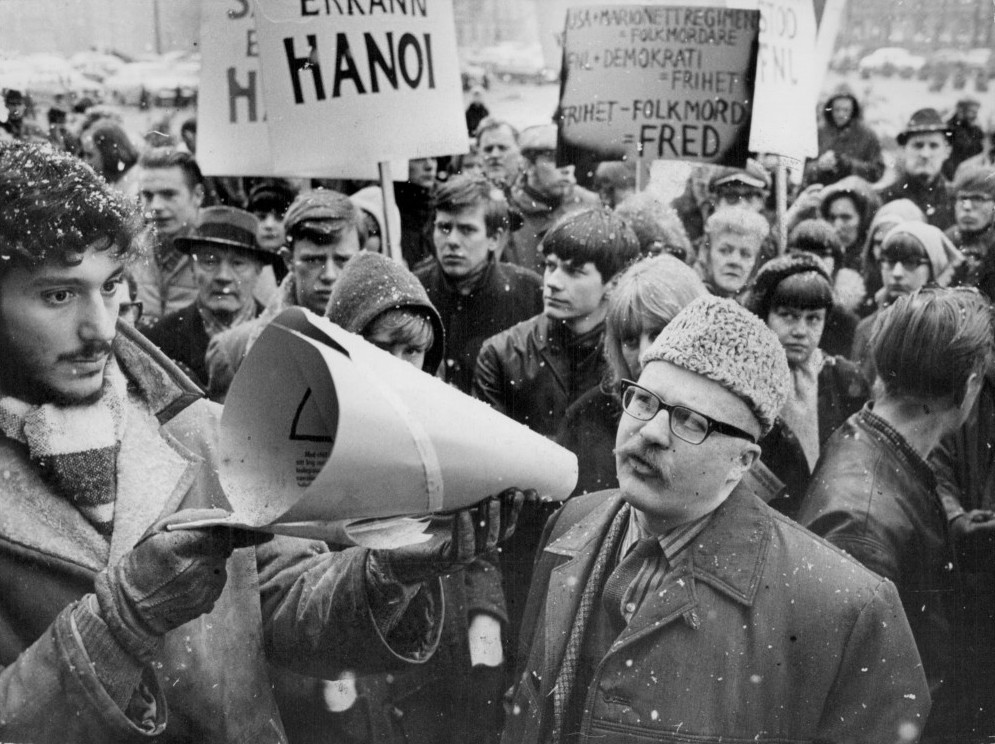
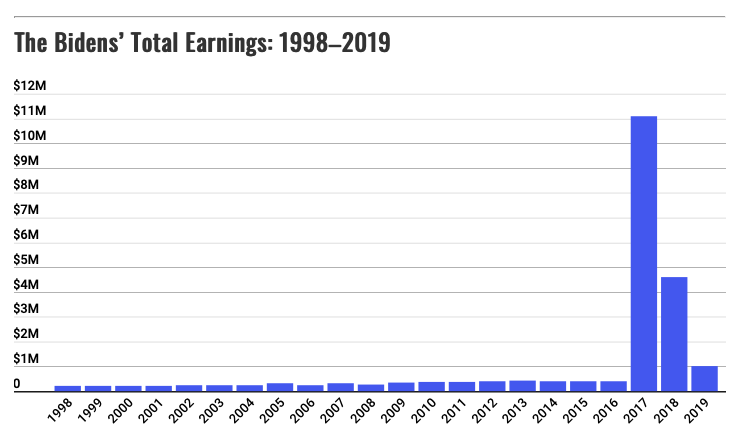




 Seeking Truth in a Country of Lies
Seeking Truth in a Country of Lies








